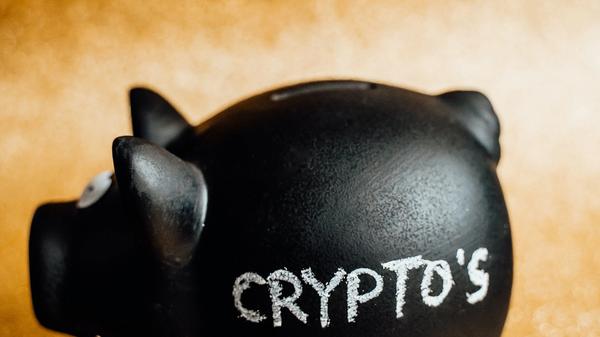XAW.TO is BlackRock’s MSCI All Country World ex Canada Index ETF, which seeks to replicate the performance of the MSCI® ACWI ex Canada IMI Index. As of April 13th, 2021, XAW had $1.6 billion in net assets.
As its name suggests, it is composed of holdings across the globe, excluding Canada. It’s a great option for Canadians who want to diversify their portfolios internationally.
In this article, we will review XAW structure, fees, and discuss its pros and cons.
XAW’s holdings
XAW is composed of 6 underlying ETFs, which together aim to represent the international markets, excluding Canada. The allocation of these ETFs is as follows.
XAW.TO Holdings
As of April 13, 2021
| Ticker | Name | Allocation (%) |
|---|---|---|
| IVV | ISHARES CORE S&P ETF | 50.43 |
| XEF | ISHARES MSCI EAFE IMI INDEX | 27.89 |
| IEMG | ISHARES CORE MSCI EMERGING MARKETS | 12.60 |
| IJH | ISHARES CORE S&P MID-CAP ETF | 3.73 |
| ITOT | ISHARES CORE S&P TOTAL U.S. STOCK | 2.63 |
| IJR | ISHARES CORE S&P SMALL-CAP ETF | 2.63 |
XAW is geographically diverse with its top 90% of net assets with the following allocation:
XAW.TO Geographical Allocation
As of April 13, 2021
| Country | Allocation (%) |
|---|---|
| United States | 59.32 |
| Japan | 6.96 |
| China | 4.36 |
| United Kingdom | 4.10 |
| France | 2.79 |
| Germany | 2.48 |
| Switzerland | 2.39 |
| Australia | 2.03 |
| Taiwan | 1.88 |
| South Korea | 1.80 |
| India | 1.26 |
| Sweden | 1.19 |
XAW is also diversified in terms of industry weighting.
XAW.TO Industry Allocation
As of April 13, 2021
| Industry | Allocation (%) |
|---|---|
| Information Technology | 20.61 |
| Financials | 13.60 |
| Consumer Discretionary | 13.49 |
| Health Care | 11.14 |
| Industrials | 11.09 |
| Communication | 8.71 |
| Consumer Staples | 6.74 |
| Materials | 5.12 |
| Real Estate | 3.37 |
| Energy | 2.90 |
| Utilities | 2.81 |
XAW's Performance
XAW's inception date is February 2015. It's showed an average annual return of 10.08% since inception, with a minimum annual return of -1.74% in 2018 and maximum of 19.37% in 2019. If you had invested $10,000 at inception, your investment would now be worth over $18,700.
XAW's distribution/dividend yield is currently 1.38%, distributed semi-annually.
XAW has a 0.22% Management Expense Ratio (MER).
Why XAW?
XAW is pretty popular for Canadian passive investors, partly because it was featured in the Canadian Couch Potato (CCP) model in 2017 and 2018. In case you're not familiar with the CCP, it is a blog (developed by Dan Bortolotti) and designed for Canadians who want to learn more about investing using index mutual funds and exchange-traded funds (ETFs). The CCP curates variations of ETF portfolios with different stock and bond allocations that many passive investors follow.
Another reason for its popularity is that XAW is a diversification tool. Many Canadians invest primarily in Canadian assets. Outside of familiarity and wanting to invest in the local economy, these investments are often more advantageous in terms of fees, taxes, and of course currency risks.
That being said, a portfolio with exposure to only one country's economy can be risky. XAW is an easy and cheap way for Canadians to add international assets to their portofolios, and diversify their risks.
Note that because of foreign withholding tax on dividends, you may want to consider investing in international assets in your RRSP (TFSAs are not recognized as tax shelters outside of Canada).
Potential Alternatives
Vanguard's VXC.TO is an alternative to BlackRock's XAW. They're fairly similar in terms of allocation, MER, performance and dividend yield, so there would be very little difference in holding either of these funds in your portfolio.
If rebalancing is no big deal to you (which is likely the case if you're using Passiv), then there may be cheaper options to own international assets and diversify your portfolio.
XAW's geographical allocation is about 60% US. For exposure to U.S. markets, you could choose to invest in a Canadian-listed ETF that tracks the U.S. total stock market, such as VUS.TO or XUU.TO. Another option is to track the S&P500 Index such as VFV.TO or XUS.TO.
The rest of XAW's geographical allocation is split between other developed countries and emerging countries.
Other developed countries represent about 28% of XAW's allocation. For exposure to developed markets outside of the U.S. and Canada, VIU.TO or XIN.TO can be good Canadian-listed options.
Emerging countries represent about 12% of XAW's allocation. For exposure to emerging markets, you could look into VEE.TO or XEM.TO.
Final Thoughts
XAW.TO is a Canadian-listed ETF that allows you to diversify your portfolio across the globe. If you own mostly Canadian assets, XAW is a cheap and easy way to have exposure to international markets.
Source: BlackRock Canada


